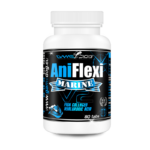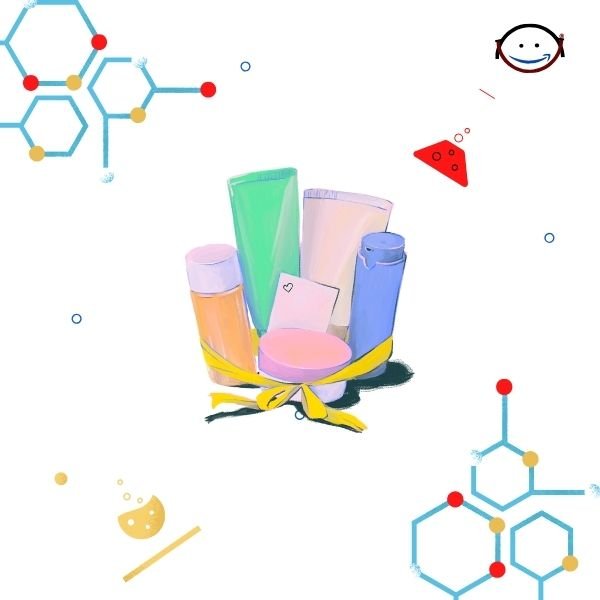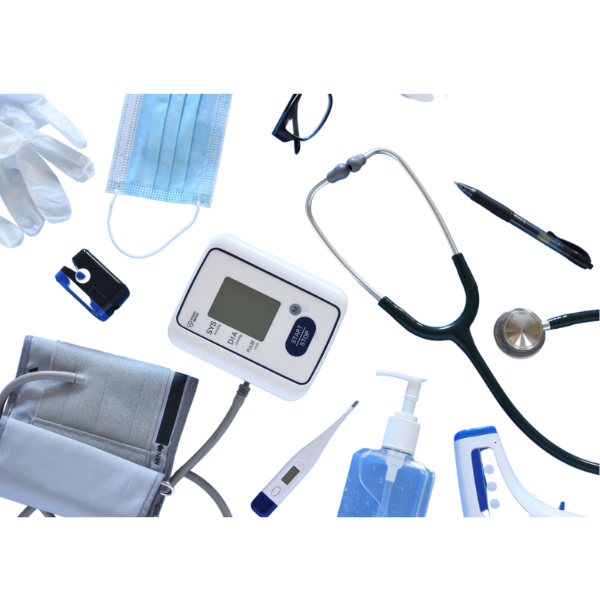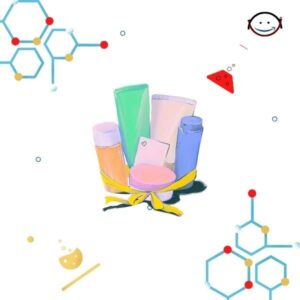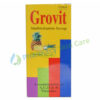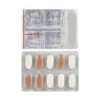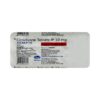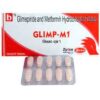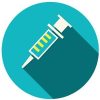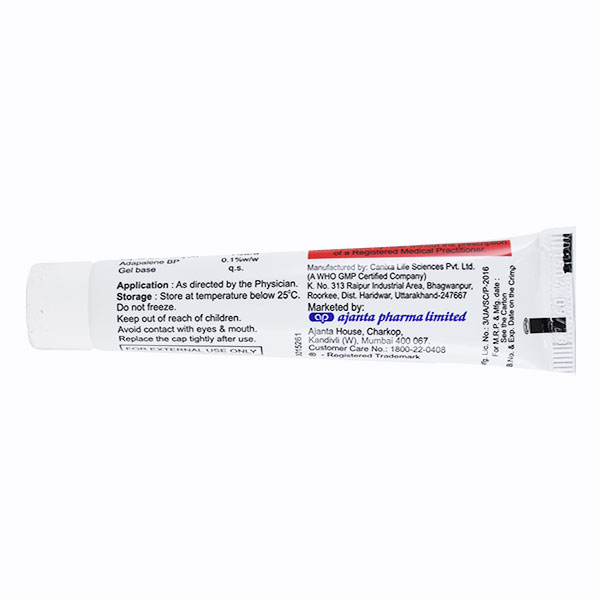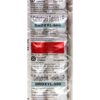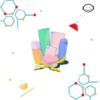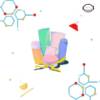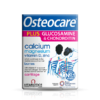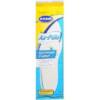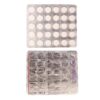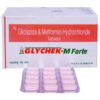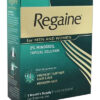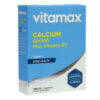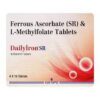-
CROCIN COLD FLU TAB ₦1,244.00 QTY: 1
-
Grovit-120ml Syrup ₦57.00 QTY: 1
-
ALBAVIR TABLET 30?S ₦30,648.75 QTY: 1
-
GLYCOSTAR M 1MG FORTE TABLETS 10?S ₦2,000.75 QTY: 1
-
CORABRAD 7.5mg Tablet 10?s ₦40,800.00 QTY: 1
-
CILNEP 10MG TAB 10`S ₦1,648.00 QTY: 1
-
Lancome LA VIE EST BELLE L?EAU DE PARFUM ₦42,900.00 QTY: 1
-
GLIMP M1 TAB 10`S ₦1,802.50 QTY: 2
-
Celplat 10Mg Injection 1?s ₦27,200.00 QTY: 1
-
MELACARE ACNE Gel 15gm ₦40,800.00 QTY: 1
-
TIREOFORCE 60CPS ₦82,783.00 QTY: 1
-
DROXYL 500MG TAB 10`S ₦1,030.00 QTY: 1
-
Linctagon Effervescent Vitamins Cherry 12 Effervescent Tablets ₦12,895.00 QTY: 1
-
LIOTHYRONINE SODIUM 20MCG TABLETS 28`S ₦100.00 QTY: 1
-
BOSUVI 400mg Tablet 30?s ₦508,300.00 QTY: 1
-
Osteocare Glucosamine and Chondroitin 60 Tablets ₦11,520.00 QTY: 1
-
Scholl Air Pillow Comfort Insoles- Provide Comfort & Prevent Foot Pain ₦11,000.00 QTY: 1
-
DOXOLIN 400MG TAB 30`s ₦2,160.50 QTY: 1
-
Invacare PerfectO2 V Oxygen Concentrator ₦100.00 QTY: 1
-
GLYCHEK M FORTE STRIP OF 15 TABLETS ₦3,891.00 QTY: 1
-
Regaine 2% Topical Solution Men and Women 60 ml ₦80.00 QTY: 1
-
DAILY IRON SR TABLETS 15?S ₦1,670.75 QTY: 1
Customer matched zone "Lagos Delivery Options"
Sort by:
305–320 of 4627 Results
-
SaleBarcavir 0.5 mgBarcavir 0.5 mg is indicated for the treatment of chronic hepatitis B virus infection in adults and pediatric patients 2 years of age and older with evidence of active viral replication and either evidence of persistent elevation in serum aminotransferases (ALT or AST) or histologically active disease.Theropeutic ClassHepatic viral infections (Hepatitis B)PharmacologyBarcavir 0.5 mg is a guanosine nucleoside analogue with potent and selective activity against HBV polymerase. For pharmacological action it is phosphorylated to the active triphosphate (TP) form. Barcavir 0.5 mg triphosphate functionally inhibits all 3 activities of the viral polymerase- Priming of the HBV polymerase, Reverse transcription of the negative strand from the pregenomic messenger RNA Synthesis of the positive strand HBV DNA. Dosage & Administration of Barcavir 0.5 mgAdministration of Barcavir 0.5 mg with food decreases absorption and so it should be taken in an empty stomach (at least 2 hours before or 2 hours after meal).?Adult over 16 years, not previously treated with nucleoside analogues: 0.5 mg once daily.Adult over 16 years with lamivudine or telbivudine resistant chronic hepatitis B: 1 mg once daily.Dosage of Barcavir 0.5 mgThe recommended dose of Barcavir 0.5 mg for chronic hepatitis B virus infection in nucleoside-treatment-naive adults and adolescents 16 years of age is 0.5 mg once daily. For Lamivudine-refractory or known Lamivudine or Telbivudine resistance mutations, the recommended dose of Barcavir 0.5 mg is 1 mg once daily. For patients with decompensated liver disease (adult) the recommended dose of Barcavir 0.5 mg is 1 mg once daily. Barcavir 0.5 mg should be administered on an empty stomach (at least 2 hours after a meal or 2 hours before the next meal).Missed Dose: If it is almost time for next dose, skip the missed dose and take the next dose at the proper time. Nobody should take a double dose to make up for the missed dose.Interaction of Barcavir 0.5 mgCo-administration of Barcavir 0.5 mg with Lamivudine or Adefovir dipivoxil did not result in significant drug interactions. The effects of co-administration of Barcavir 0.5 mg with other drugs that are eliminated through renal or are known to affect renal function have not been evaluated and patients should be monitored closely for adverse events when coadministered with such drugs.ContraindicationsBarcavir 0.5 mg is contraindicated in patients with previously demonstrated hypersensitivity to Barcavir 0.5 mg or any component of the product.Side Effects of Barcavir 0.5 mgThe most common adverse events are headache, fatigue, dizziness and nausea.Pregnancy & LactationUse in pregnancy: There are no adequate and well-controlled studies in pregnant women. Barcavir 0.5 mg should be used during pregnancy only if the potential benefit justifies the potential risk to the fetus.Use in lactation: It is not known whether Barcavir 0.5 mg is excreted in human milk. Mothers should be instructed not to breast-feed if they are taking Barcavir 0.5 mg.Precautions & WarningsLactic acidosis: Lactic acidosis and severe hepatomegaly with steatosis, including fatal cases have been reported with the use of nucleoside analogues alone or in combination with antiretrovirals. Exacerbations of hepatitis after discontinuation of treatment: Severe acute exacerbations of hepatitis B have been reported in patients who have discontinued anti-hepatitis B therapy, including Barcavir 0.5 mg.Overdose Effects of Barcavir 0.5 mgThere is no experience of Barcavir 0.5 mg overdosage reported in patients. Healthy subjects who received up to 20 mg daily for up to 14 days and single doses up to 40 mg had no unexpected adverse events. If overdosage occurs, the patient must be monitored for evidence of toxicity and standard supportive treatment as necessary.Storage ConditionsKeep in a dry place and store below 30?C. Protect from light and keep out of the reach of children.Use In Special PopulationsUse in pediatric patient: Safety and effectiveness of Barcavir 0.5 mg in pediatric patients below the age of 16 years have not been established.Use in geriatric patient: Barcavir 0.5 mg is significantly excreted by the kidney, and the risk of toxic reactions to this drug may be greater in patients with impaired renal function. Because elderly patients are more likely to have decreased renal function, care should be taken in dose selection, and it may be useful to monitor renal function.Dose adjustment in renal impairment: Dose adjustment is recommended for patients with CrCl <50 ml/min including patients on hemodialysis or continuous ambulatory peritoneal dialysis (CAPD) as shown in the following table.CrCl ?50 ml/min:?0.5 mg every 24 hoursCrCl?30 to <50 ml/min:?0.5 mg every 48 hoursCrCl 10 to <30 ml/min:?0.5 mg every 72 hoursCrCl <10?ml/min or? Hemodialysis or CAPD:?0.5 mg every 7 daysDrug ClassesHepatic viral infections (Hepatitis B)Mode Of ActionBy competing with the natural substrate deoxyguanosine triphosphate, Barcavir 0.5 mg functionally inhibits all three activities of the HBV polymerase (reverse transcriptase, rt): Base priming, Reverse transcription of the negative strand from the pregenomic messenger RNA, and Synthesis of the positive strand of HBV DNA. Upon activation by kinases, the drug can be incorporated into the DNA which has the ultimate effect of inhibiting the HBV polymerase activity. PregnancyThere are no data on the effect of Barcavir 0.5 mg on the transmission of HBV from mother to infant. Therefore, appropriate care should be taken. It is not known whether it is excreted in human milk. Mothers should be instructed not to breastfeed if they are taking Barcavir 0.5 mg.Pediatric UsesPediatric: Safety and effectiveness of Barcavir 0.5 mg in pediatric patients below the age of 2 years have not been established.Geriatric: Clinical studies of Barcavir 0.5 mg did not include sufficient numbers of subjects aged 65 years and over to determine whether they respond differently from younger subjects. But care should be taken in dose selection, and it may be useful to monitor renal function. Dose adjustment in renal impairment: Dose adjustment is recommended for patients with CrCl <50 ml/min including patients on hemodialysis or continuous ambulatory peritoneal dialysis (CAPD) as shown below: CrCl ?50 ml/min:?0.5 mg every 24 hours CrCl?30 to <50 ml/min:?0.5 mg every 48 hours CrCl 10 to <30 ml/min:?0.5 mg every 72 hours CrCl <10?ml/min or? Hemodialysis or CAPD:?0.5 mg every 7 daysSku: 1736107243-4389
Barcavir0.5 mg
₦26,400.00Original price was: ₦26,400.00.₦23,760.00Current price is: ₦23,760.00.₦26,400.00Original price was: ₦26,400.00.₦23,760.00Current price is: ₦23,760.00. Add to basket Quick View -
SaleBaricent 2 mgBaricent 2 mg is indicated for the treatment of adult patients with moderate to severely active Rheumatoid Arthritis who have had an inadequate response to one or more tumor necrosis factor (TNF) antagonist therapies. Limitation of Use: Use of Baricent 2 mg in combination with other JAK inhibitors ... Read moreBaricent 2 mg is indicated for the treatment of adult patients with moderate to severely active Rheumatoid Arthritis who have had an inadequate response to one or more tumor necrosis factor (TNF) antagonist therapies. Limitation of Use: Use of Baricent 2 mg in combination with other JAK inhibitors, biologic DMARDs or with potent immunosuppressants such as Azathioprine and cyclosporine is not recommended.Theropeutic ClassImmunosuppressantPharmacologyBaricent 2 mg is a Janus kinase (JAK) inhibitor. JAKs are intracellular enzymes which transmit signals arising from cytokine or growth factor-receptor interactions on the cellular membrane to influence cellular processes of hematopoiesis and immune cell function. Within the signaling pathway, JAKs phosphorylate and activate Signal Transducers and Activators of Transcription (STATs) which modulate intracellular activity including gene expression. Baricent 2 mg modulates the signaling pathway at the point of JAKs, preventing the phosphorylation and activation of STATs.Dosage & Administration of Baricent 2 mgThe recommended dose of Baricent 2 mg is 2 mg once daily. Baricent 2 mg may be used as monotherapy or in combination with Methotrexate or other DMARDs.Dosage of Baricent 2 mgAdult dose: The recommended dose of Baricent 2 mg is 2 mg once daily. It may be used as monotherapy or in combination with Methotrexate or other Disease-modifying antirheumatic drugs (DMARDS). Baricent 2 mg can be given orally with or without food.Pediatric Use: The safety and effectiveness of Baricent 2 mg in pediatric patients have not been established.Geriatric Use: Because elderly patients are more likely to have decreased renal function, care should be taken in dose selection.Hepatic Impairment: No dose adjustment is necessary in patients with mild or moderate hepatic impairment.Renal impairment: Baricent 2 mg is not recommended for use in patients with estimated GFR of less than 60 mL/min/I .73 m2.Interaction of Baricent 2 mgStrong OAT3 Inhibitors: Baricent 2 mg exposure is increased when it is co-administered with strong OAT3 inhibitors (such as probenecid).Other JAK Inhibitors or Biologic DMARDs: Baricent 2 mg has not been studied in combination with other JAK inhibitors or with biologic DMARDS.Contraindications Anemia: Avoid initiation or interrupt Baricent 2 mg in patients with hemoglobin less than 8 g/dL. Lymphopenia: Avoid initiation or interrupt Baricent 2 mg in patients with an Absolute Lymphocyte Count less than 500 cells/mm3. Neutropenia: Avoid initiation or interrupt Baricent 2 mg in patients with an Absolute Neutrophil Count less than 1000 cells/mm3. Side Effects of Baricent 2 mgThe most commonly reported adverse drug reactions (ADRs) occurring in 2% of patients treated with Baricent 2 mg monotherapy or in combination with conventional synthetic DMARDs were increased LDL cholesterol (33.6%), upper respiratory tract infections (14.7%) and nausea (2.8%).Pregnancy & LactationIt is not known if Baricent 2 mg will harm an unborn baby. Because of the potential for serious adverse reactions in nursing infants, advice an Baricent 2 mg treated woman not to breastfeed.Precautions & Warnings Serious Infections: Avoid use of Baricent 2 mg in patients with an active, serious infection, including localized infections. Tuberculosis: Baricent 2 mg should not be given to patients with active TB. Malignancy and Lymphoproliferative Disorders: Consider the risks and benefits of Baricent 2 mg treatment prior to initiating therapy in patients with a known malignancy other than a successfully treated non-melanoma skin cancer (NMSC) or when considering continuing Baricent 2 mg in patients who develop a malignancy. Thrombosis: Baricent 2 mg should be used with caution in patients who may be at increased risk of thrombosis. Gastrointestinal Perforations: Baricent 2 mg should be used with caution in patients who may be at increased risk for gastrointestinal perforation. To be dispensed only by the prescription of a registered physician. Overdose Effects of Baricent 2 mgIn case of an overdose, it is recommended that the patient should be monitored for signs and symptoms of adverse reactions. Patients who develop adverse reactions should receive appropriate treatment.Storage ConditionsStore at or below 30?C temperature. Keep away from light and wet place. Keep out of reach of children.Use In Special PopulationsModerate Renal Impairment: Reduce dose to 1 mg once daily.Drug ClassesImmunosuppressantMode Of ActionBaricent 2 mg is a selective and reversible inhibitor of Janus kinase JAK1 and JAK2. Janus kinases (JAKs) are enzymes that transduce intracellular signals from cell surface receptors for a number of cytokines and growth factors involved in haematopoiesis, inflammation and immune function. Within the intracellular signalling pathway, JAKs phosphorylate and activate signal transducers and activators of transcription (STATs), which activate gene expression within the cell. Baricent 2 mg modulate these signalling pathways by partially inhibiting JAK1 and JAK2 enzymatic activity, thereby reducing the phosphorylation and activation of STATs.PregnancyBaricent 2 mg is contraindicated during pregnancy.?No information is available on the presence of Baricent 2 mg in human milk.Sku: 1736100806-2498
Baricent2 mg
₦1,375.00Original price was: ₦1,375.00.₦1,237.50Current price is: ₦1,237.50.₦1,375.00Original price was: ₦1,375.00.₦1,237.50Current price is: ₦1,237.50. Add to basket Quick View -
SaleBaricit 4 mgBaricit 4 mg is indicated for the treatment of adult patients with moderate to severely active Rheumatoid Arthritis who have had an inadequate response to one or more tumor necrosis factor (TNF) antagonist therapies. Limitation of Use: Use of Baricit 4 mg in combination with other JAK inhibitors ... Read moreBaricit 4 mg is indicated for the treatment of adult patients with moderate to severely active Rheumatoid Arthritis who have had an inadequate response to one or more tumor necrosis factor (TNF) antagonist therapies. Limitation of Use: Use of Baricit 4 mg in combination with other JAK inhibitors, biologic DMARDs or with potent immunosuppressants such as Azathioprine and cyclosporine is not recommended.Theropeutic ClassImmunosuppressantPharmacologyBaricit 4 mg is a Janus kinase (JAK) inhibitor. JAKs are intracellular enzymes which transmit signals arising from cytokine or growth factor-receptor interactions on the cellular membrane to influence cellular processes of hematopoiesis and immune cell function. Within the signaling pathway, JAKs phosphorylate and activate Signal Transducers and Activators of Transcription (STATs) which modulate intracellular activity including gene expression. Baricit 4 mg modulates the signaling pathway at the point of JAKs, preventing the phosphorylation and activation of STATs.Dosage & Administration of Baricit 4 mgThe recommended dose of Baricit 4 mg is 2 mg once daily. Baricit 4 mg may be used as monotherapy or in combination with Methotrexate or other DMARDs.Dosage of Baricit 4 mgAdult dose: The recommended dose of Baricit 4 mg is 2 mg once daily. It may be used as monotherapy or in combination with Methotrexate or other Disease-modifying antirheumatic drugs (DMARDS). Baricit 4 mg can be given orally with or without food.Pediatric Use: The safety and effectiveness of Baricit 4 mg in pediatric patients have not been established.Geriatric Use: Because elderly patients are more likely to have decreased renal function, care should be taken in dose selection.Hepatic Impairment: No dose adjustment is necessary in patients with mild or moderate hepatic impairment.Renal impairment: Baricit 4 mg is not recommended for use in patients with estimated GFR of less than 60 mL/min/I .73 m2.Interaction of Baricit 4 mgStrong OAT3 Inhibitors: Baricit 4 mg exposure is increased when it is co-administered with strong OAT3 inhibitors (such as probenecid).Other JAK Inhibitors or Biologic DMARDs: Baricit 4 mg has not been studied in combination with other JAK inhibitors or with biologic DMARDS.Contraindications Anemia: Avoid initiation or interrupt Baricit 4 mg in patients with hemoglobin less than 8 g/dL. Lymphopenia: Avoid initiation or interrupt Baricit 4 mg in patients with an Absolute Lymphocyte Count less than 500 cells/mm3. Neutropenia: Avoid initiation or interrupt Baricit 4 mg in patients with an Absolute Neutrophil Count less than 1000 cells/mm3. Side Effects of Baricit 4 mgThe most commonly reported adverse drug reactions (ADRs) occurring in 2% of patients treated with Baricit 4 mg monotherapy or in combination with conventional synthetic DMARDs were increased LDL cholesterol (33.6%), upper respiratory tract infections (14.7%) and nausea (2.8%).Pregnancy & LactationIt is not known if Baricit 4 mg will harm an unborn baby. Because of the potential for serious adverse reactions in nursing infants, advice an Baricit 4 mg treated woman not to breastfeed.Precautions & Warnings Serious Infections: Avoid use of Baricit 4 mg in patients with an active, serious infection, including localized infections. Tuberculosis: Baricit 4 mg should not be given to patients with active TB. Malignancy and Lymphoproliferative Disorders: Consider the risks and benefits of Baricit 4 mg treatment prior to initiating therapy in patients with a known malignancy other than a successfully treated non-melanoma skin cancer (NMSC) or when considering continuing Baricit 4 mg in patients who develop a malignancy. Thrombosis: Baricit 4 mg should be used with caution in patients who may be at increased risk of thrombosis. Gastrointestinal Perforations: Baricit 4 mg should be used with caution in patients who may be at increased risk for gastrointestinal perforation. To be dispensed only by the prescription of a registered physician. Overdose Effects of Baricit 4 mgIn case of an overdose, it is recommended that the patient should be monitored for signs and symptoms of adverse reactions. Patients who develop adverse reactions should receive appropriate treatment.Storage ConditionsStore at or below 30?C temperature. Keep away from light and wet place. Keep out of reach of children.Use In Special PopulationsModerate Renal Impairment: Reduce dose to 1 mg once daily.Drug ClassesImmunosuppressantMode Of ActionBaricit 4 mg is a selective and reversible inhibitor of Janus kinase JAK1 and JAK2. Janus kinases (JAKs) are enzymes that transduce intracellular signals from cell surface receptors for a number of cytokines and growth factors involved in haematopoiesis, inflammation and immune function. Within the intracellular signalling pathway, JAKs phosphorylate and activate signal transducers and activators of transcription (STATs), which activate gene expression within the cell. Baricit 4 mg modulate these signalling pathways by partially inhibiting JAK1 and JAK2 enzymatic activity, thereby reducing the phosphorylation and activation of STATs.PregnancyBaricit 4 mg is contraindicated during pregnancy.?No information is available on the presence of Baricit 4 mg in human milk.Sku: 1736100613-2438
Baricit4 mg
₦16,500.00Original price was: ₦16,500.00.₦14,850.00Current price is: ₦14,850.00.₦16,500.00Original price was: ₦16,500.00.₦14,850.00Current price is: ₦14,850.00. Add to basket Quick View -
SaleBarif 40 mgBarif 40 mg is indicated for the chronic management of hyperuricemia in patients with gout. Barif 40 mg is not recommended for the treatment of asymptomatic hyperuricemia.Theropeutic ClassDrugs used in GoutPharmacologyBarif 40 mg is a non-purine, selective xanthine oxidase (XO) inhibitor. It decreases serum uric acid level by inhibiting xanthine oxidase, which is responsible for uric acid production. Xanthine oxidase breaks down hypoxanthine to xanthine and thus to uric acid. Barif 40 mg is not expected to inhibit other enzymes involved in purine and pyrimidine synthesis and metabolism at therapeutic concentrations.Dosage & Administration of Barif 40 mgBarif 40 mg is recommended at 40 mg or 80 mg once daily. The recommended starting dose of Barif 40 mg is 40 mg once daily. For patients who do not achieve a serum uric acid less than 6 mg /dL after 2 weeks with 40 mg, Barif 40 mg 80 mg is recommended. Barif 40 mg can be administered without regard to food or antacid use. No dose adjustment is necessary when administering Barif 40 mg to patients with mild to moderate renal or hepatic impairment.Dosage of Barif 40 mgBarif 40 mg is recommended at 40 mg or 80 mg once daily. The recommended starting dose of Barif 40 mg is 40 mg once daily. For patients who do not achieve a serum uric acid less than 6 mg /dL after 2 weeks with 40 mg, Barif 40 mg 80 mg is recommended. Barif 40 mg can be administered without regard to food or antacid use. No dose adjustment is necessary when administering Barif 40 mg to patients with mild to moderate renal or hepatic impairment.Interaction of Barif 40 mgConcomitant administration of Barif 40 mg with azathioprine, mercaptopurine or theophylline could increase plasma concentrations of these drugs resulting in severe toxicity.ContraindicationsBarif 40 mg is contraindicated in patients being treated with azathioprine, mercaptopurine, or theophylline.Side Effects of Barif 40 mgThe most common adverse events associated with the use of Barif 40 mg may include liver function abnormalities, nausea, arthralgia, and rash.Pregnancy & LactationPregnancy Category C. There are no adequate and well-controlled studies in pregnant women. Barif 40 mg should be used during pregnancy only if the potential benefit justifies the potential risk to the fetus. It is not known whether this drug is excreted in human milk. Caution should be exercised when Barif 40 mg is administered to a nursing woman.Precautions & WarningsGout Flare: An increase in gout flares is frequently observed during initiation of anti-hyperuricemic agents, including Barif 40 mg. If a gout flare occurs during treatment, Barif 40 mg need not be discontinued. Prophylactic therapy (i.e., non-steroidal anti-inflammatory drug (NSAID) or colchicine upon initiation of treatment) may be beneficial for up to six months.Cardiovascular Events: A higher rate of cardiovascular thromboembolic events was observed in patients treated with Barif 40 mg than allopurinol in clinical trials. Monitor for signs and symptoms of MI and stroke.Liver Enzyme Elevation: Transaminase elevations have been observed in Barif 40 mg -treated patients. Monitor liver function tests periodically.Overdose Effects of Barif 40 mgFebustat was studied in healthy subjects in doses up to 300 mg daily for seven days without evidence of dose-limiting toxicities.Storage ConditionsKeep below 30?C temperature, away from light & moisture. Keep out of the reach of children.Use In Special PopulationsPediatric Use: Safety and effectiveness in pediatric patients under 18 years of age have not been establishedDrug ClassesDrugs used in GoutMode Of ActionBarif 40 mg is a non-purine, selective xanthine oxidase (XO) inhibitor. It decreases serum uric acid level by inhibiting xanthine oxidase, which is responsible for uric acid production. Xanthine oxidase breaks down hypoxanthine to xanthine and thus to uric acid. Barif 40 mg is not expected to inhibit other enzymes involved in purine and pyrimidine synthesis and metabolism at therapeutic concentrations.PregnancyPregnancy Category C. There are no adequate and well-controlled studies in pregnant women. Barif 40 mg should be used during pregnancy only if the potential benefit justifies the potential risk to the fetus. It is not known whether this drug is excreted in human milk. Caution should be exercised when Barif 40 mg is administered to a nursing woman.Pediatric UsesPediatric Use: Safety and effectiveness in pediatric patients under 18 years of age have not been establishedSku: 1736105343-3822
Barif40 mg
₦6,616.50Original price was: ₦6,616.50.₦5,954.85Current price is: ₦5,954.85.₦6,616.50Original price was: ₦6,616.50.₦5,954.85Current price is: ₦5,954.85. Add to basket Quick View -
SaleBaritor 2 mgBaritor 2 mg is indicated for the treatment of adult patients with moderate to severely active Rheumatoid Arthritis who have had an inadequate response to one or more tumor necrosis factor (TNF) antagonist therapies. Limitation of Use: Use of Baritor 2 mg in combination with other JAK inhibitors ... Read moreBaritor 2 mg is indicated for the treatment of adult patients with moderate to severely active Rheumatoid Arthritis who have had an inadequate response to one or more tumor necrosis factor (TNF) antagonist therapies. Limitation of Use: Use of Baritor 2 mg in combination with other JAK inhibitors, biologic DMARDs or with potent immunosuppressants such as Azathioprine and cyclosporine is not recommended.Theropeutic ClassImmunosuppressantPharmacologyBaritor 2 mg is a Janus kinase (JAK) inhibitor. JAKs are intracellular enzymes which transmit signals arising from cytokine or growth factor-receptor interactions on the cellular membrane to influence cellular processes of hematopoiesis and immune cell function. Within the signaling pathway, JAKs phosphorylate and activate Signal Transducers and Activators of Transcription (STATs) which modulate intracellular activity including gene expression. Baritor 2 mg modulates the signaling pathway at the point of JAKs, preventing the phosphorylation and activation of STATs.Dosage & Administration of Baritor 2 mgThe recommended dose of Baritor 2 mg is 2 mg once daily. Baritor 2 mg may be used as monotherapy or in combination with Methotrexate or other DMARDs.Dosage of Baritor 2 mgAdult dose: The recommended dose of Baritor 2 mg is 2 mg once daily. It may be used as monotherapy or in combination with Methotrexate or other Disease-modifying antirheumatic drugs (DMARDS). Baritor 2 mg can be given orally with or without food.Pediatric Use: The safety and effectiveness of Baritor 2 mg in pediatric patients have not been established.Geriatric Use: Because elderly patients are more likely to have decreased renal function, care should be taken in dose selection.Hepatic Impairment: No dose adjustment is necessary in patients with mild or moderate hepatic impairment.Renal impairment: Baritor 2 mg is not recommended for use in patients with estimated GFR of less than 60 mL/min/I .73 m2.Interaction of Baritor 2 mgStrong OAT3 Inhibitors: Baritor 2 mg exposure is increased when it is co-administered with strong OAT3 inhibitors (such as probenecid).Other JAK Inhibitors or Biologic DMARDs: Baritor 2 mg has not been studied in combination with other JAK inhibitors or with biologic DMARDS.Contraindications Anemia: Avoid initiation or interrupt Baritor 2 mg in patients with hemoglobin less than 8 g/dL. Lymphopenia: Avoid initiation or interrupt Baritor 2 mg in patients with an Absolute Lymphocyte Count less than 500 cells/mm3. Neutropenia: Avoid initiation or interrupt Baritor 2 mg in patients with an Absolute Neutrophil Count less than 1000 cells/mm3. Side Effects of Baritor 2 mgThe most commonly reported adverse drug reactions (ADRs) occurring in 2% of patients treated with Baritor 2 mg monotherapy or in combination with conventional synthetic DMARDs were increased LDL cholesterol (33.6%), upper respiratory tract infections (14.7%) and nausea (2.8%).Pregnancy & LactationIt is not known if Baritor 2 mg will harm an unborn baby. Because of the potential for serious adverse reactions in nursing infants, advice an Baritor 2 mg treated woman not to breastfeed.Precautions & Warnings Serious Infections: Avoid use of Baritor 2 mg in patients with an active, serious infection, including localized infections. Tuberculosis: Baritor 2 mg should not be given to patients with active TB. Malignancy and Lymphoproliferative Disorders: Consider the risks and benefits of Baritor 2 mg treatment prior to initiating therapy in patients with a known malignancy other than a successfully treated non-melanoma skin cancer (NMSC) or when considering continuing Baritor 2 mg in patients who develop a malignancy. Thrombosis: Baritor 2 mg should be used with caution in patients who may be at increased risk of thrombosis. Gastrointestinal Perforations: Baritor 2 mg should be used with caution in patients who may be at increased risk for gastrointestinal perforation. To be dispensed only by the prescription of a registered physician. Overdose Effects of Baritor 2 mgIn case of an overdose, it is recommended that the patient should be monitored for signs and symptoms of adverse reactions. Patients who develop adverse reactions should receive appropriate treatment.Storage ConditionsStore at or below 30?C temperature. Keep away from light and wet place. Keep out of reach of children.Use In Special PopulationsModerate Renal Impairment: Reduce dose to 1 mg once daily.Drug ClassesImmunosuppressantMode Of ActionBaritor 2 mg is a selective and reversible inhibitor of Janus kinase JAK1 and JAK2. Janus kinases (JAKs) are enzymes that transduce intracellular signals from cell surface receptors for a number of cytokines and growth factors involved in haematopoiesis, inflammation and immune function. Within the intracellular signalling pathway, JAKs phosphorylate and activate signal transducers and activators of transcription (STATs), which activate gene expression within the cell. Baritor 2 mg modulate these signalling pathways by partially inhibiting JAK1 and JAK2 enzymatic activity, thereby reducing the phosphorylation and activation of STATs.PregnancyBaritor 2 mg is contraindicated during pregnancy.?No information is available on the presence of Baritor 2 mg in human milk.Sku: 1736102165-2899
Baritor2 mg
₦13,750.00Original price was: ₦13,750.00.₦12,375.00Current price is: ₦12,375.00.₦13,750.00Original price was: ₦13,750.00.₦12,375.00Current price is: ₦12,375.00. Add to basket Quick View -
SaleBasok 100 mlThis Basok 100 ml liquefies phlegm, It soothes irritation of throat and helps relieve hoarseness. It is a very effective treatment option for all types of cough such as dry irritable cough, allergic & smokers cough.CompositionEach teaspoon full (5 ml) of Basok 100 ml contains the extracts of- Adhatoda vasica 0.68 gm Piper longum 0.14 gm Glycyrrhiza glabra 6.78 mg Zingiber officinale 6.78 mg Piper nigrum 6.78 mg Terminalia chebula 73.00 mg Saussurea lappa 6.78 mg Syzygium aromaticum 6.78 mg Elettaria cardamomum 6.78 mg Cinnamomum zeylanicum 6.78 mg Cinnamomum tamala 6.78 mg Pistacia integerrima 6.78 mg Myrica nagi 6.78 mg Theropeutic ClassHerbal and NutraceuticalsPharmacology Adhatoda vasica (Vasak): It contains alkaloids vasicine & vasicinone. It has mucolytic, expectorant, anti-inflammatory and antibacterial properties. Piper longum (Pipul): Effective in allergic and asthmatic cough, chronic congestion and hoarseness. Glycyrrhiza glabra (Jastimadhu): Relieves irritation of throat. Used as demulcent, expectorant and anti-inflammatory agent. Terminalia chebula (Haritaki): It has laxative properties. It removes toxin from the body. Saussurea lappa (Kur): It has antiseptic, disinfectant and anti-inflammatory properties and also effective in bronchial asthma. Zingiber officinale (Ginger): Acts as an antihistamine and very useful in common cold. Piper nigrum (Black pepper): It has bacteriostatic, fungistatic and anti-inflammatory properties. Syzygium aromaticum (Labango): Removes cough, sore throat and coryza. Elettaria cardamomum (Elach): It has antimicrobial, anti-inflammatory and analgesic properties. It prevents bad breath. It is used as an aromatic stimulant, carminative and flavoring agent. Cinnamomum zeylanicum (Darchini): It relieves cough due to its soothing action. It is a good anti-infective agent. Cinnamomum tamala (Tejpata): It helps to cure respiratory disorders including flu, sinusitis, asthma and chronic inflammation of the mucous membrane. Pistacia integerrima (Kakra sringi): Helps in cough, asthma and anorexia. Myrica nagi ( katphal): It helps to relieve dyspnoea, cough and throat irritation. Ocimum sanctum (Basil): It is effective to increase soothing action and to relieve acute cough. Dosage & Administration of Basok 100 mlChildren under 12 years: 1-2 teaspoonful (5-10 ml) 2-3 times a day.Adult: 3 teaspoonful (15 ml) 2-3 times a day.Interaction of Basok 100 mlNo clinically significant drug interactions have been reported.ContraindicationsThere is no evidence available on contraindication but it may happen in patients who are hypersensitive to any of its ingredients.Side Effects of Basok 100 mlHerbal medicine is clinically proven as safe and well tolerated. In the recommended dose side-effects are rare. But, in high dose diarrhea, vomiting may occur.Pregnancy & LactationThe safety of the components used in this Basok 100 ml has not been studied in pregnancy. It is not known whether this product passes into breast milk. Therefore, the drug should be used with caution during pregnancy and breastfeeding.Precautions & WarningsCaution needed if use in pregnancy and lactation.Overdose Effects of Basok 100 mlSymptoms of overdose may include diarrhea and vomiting.Storage ConditionsKeep below 30?C temperature, away from light & moisture. Keep out of the reach of children.Sku: 1736104481-3568
Basok100 ml
₦3,850.00Original price was: ₦3,850.00.₦3,465.00Current price is: ₦3,465.00.₦3,850.00Original price was: ₦3,850.00.₦3,465.00Current price is: ₦3,465.00. Add to basket Quick View -
SaleBasok 200 ml This Adovas liquefies phlegm. It soothes irritation of the throat. Helps to relieve hoarseness. It is a remedy for all types of cough such as dry irritable cough, allergic & smokers cough. Composition Each teaspoon full (5 ml) of syrup contains extracts of- Adhatoda vasica 0.68 gm Piper longum 0.14 gm Glycyrrhiza glabra 6.78 mg Trikatu (Piper nigrum, Zingiber officinale) 20.34 mg Terminalia chebula 73.24 mg Vitis venifera 0.14 gm Acorus calamus 6.78 mg Saussurea lappa 6.78 mg Syzygium aromaticum 6.78 mg Trizatak (Cinnamomum zeylanicum, Elettaria cardamomum, Cinnamomum tamala) 20.34 mg Pistacia integerrima 6.78 mg Myrica nagi 6.78 mg Woodfordia fruticosa 1.14 mg. Dosage of Basok 200 ml Children under 12 years: 1-2 teaspoonful (5-10 ml) 2-3 times a day. 'Adult: 3 teaspoonful (15 ml) 2-3 times a day.Some warm water may be added for better results. Interaction of Basok 200 ml No report is available. Contraindications No report is available on contraindication. It may be happen in patients who are hypersensitive to any of its ingredients. Side Effects of Basok 200 ml This syrup is proven as safe. It is well tolerated. In high dose diarrhea, vomiting may occur. Storage Conditions Keep out of reach of children. Keep away from direct sunlight. Store in a cool and dry place. Drug Classes Herbal and Nutraceuticals Mode Of Action Adhatoda vasica (Basok): Relieves cough & bronchial spasm. It liquefies mucous. Piper longum (Pipul): Relieves cold allergy & asthma. Glycyrrhiza glabra (Jashthi Modhu) : Relieves irritation of throat. Enhances the immune system. It is anti-inflammatory, demulcent & expectorant. Piper nigrum (Marich): It is fungistatic, bacteriostatic & anti-inflammatory. Zingiber officinale (Shunthi): It is antihistaminic. Very much effective in common cold. Terminalia chebula (Haritaki): It removes toxin from the body. It has beneficial effect on all tissues. Vitis venifera (Kismiss): Relieves cough and general tonic. Acorus calamus (Bacha): Helps in bronchial catarrh & intermittent fever. Saussurea lappa (Kur): It is antiseptic & disinfectant. It is very useful in bronchial asthma. Syzygium aromaticum (Labango): Useful in cough & other respiratory diseases. It prevents bad breath. Cinnamomum zeylanicum (Darchini): It is antibacterial & antifungal and relieves cough due to its soothing action. Elettaria cardamomum (Elachi): It is aromatic in nature and shows antimicrobial activity. Cinnamomum tamala (Tejpata): It is a tonic & appetizer agent. Pistacia integerrima (Kakra sringi): It helps in asthma. Myrica nagi ( Kotfal): It is a remedy for sore throat. Woodfordia fruticosa (Daiful): It is good anti-infective agent and is useful in relieving cough due to its soothing action. Tulsi extract & other ingredients: Tulsi extract & some other ingredients are added to DEVAS syrup for relieving acute cough. Pregnancy The safety of this syrup in pregnancy has not been studied. Therefore, it should be used with caution during pregnancy.Sku: 1736103804-3371
Basok200 ml
₦6,050.00Original price was: ₦6,050.00.₦5,445.00Current price is: ₦5,445.00.₦6,050.00Original price was: ₦6,050.00.₦5,445.00Current price is: ₦5,445.00. Add to basket Quick View -
SaleBeklo 10 mgBeklo 10 mg is indicated for the treatment of spasticity, including flexor spasms, associated pain, clonus, muscular rigidity, as well as skeletal muscle spasms resulting from conditions such as multiple sclerosis, rheumatic disorders, spinal cord injuries, other spinal cord diseases, cerebrovascular accidents, neoplastic, or degenerative brain diseases.Theropeutic ClassCentrally acting Skeletal Muscle RelaxantsPharmacologyBeklo 10 mg is an effective muscle relaxant and antispastic agent that primarily acts at the spinal level. While its exact mode of action is not fully understood, Beklo 10 mg works by stimulating GABAB receptors, which inhibits the release of glutamate and aspartate, thereby affecting both monosynaptic and polysynaptic reflexes. It may also have central nervous system (CNS) depressant effects at intraspinal sites. Notably, Beklo 10 mg does not impact neuromuscular transmission. Beklo 10 mg exhibits an antinociceptive (pain-relieving) effect, although its clinical significance remains uncertain.Dosage & Administration of Beklo 10 mgBeklo 10 mg should be taken with a small amount of liquid during meals. The dosing regimen for Beklo 10 mg varies for adults and children. In adults, it's typically administered in divided doses, preferably three times a day. The aim is to use the lowest effective dose. For adults, the therapy usually begins with a low dose and is then increased gradually to achieve the best response, typically falling within the range of 30-80 mg daily. Additional increases may be necessary but should generally not exceed a maximum daily dose of 80 mg. For children, treatment should begin with an extremely low dose, such as 0.3 mg/kg per day, divided into multiple doses. The dose can then be cautiously increased at 1-2 week intervals until it meets the child's specific needs. The usual maintenance dose for children typically falls within the range of 0.75 to 2 mg/kg of body weight per day. For children over 10 years of age, a maximum daily dose of 2.5 mg/kg of body weight may be considered.Interaction of Beklo 10 mgIncreased sedation may occur when Beklo 10 mg is taken alongside agents that affect the central nervous system, alcohol, or synthetic opiates. This also elevates the risk of respiratory depression. When Beklo 10 mg is combined with antihypertensives, it's likely to amplify the drop in blood pressure. Adjustments to the antihypertensive medication dosage may be necessary.? Concurrently administering Beklo 10 mg with tricyclic antidepressants may intensify Beklo 10 mg's pharmacological effects, leading to pronounced muscular hypotonia. In individuals with Parkinson's disease receiving Beklo 10 mg along with levodopa and carbidopa, there have been reports of mental confusion, hallucinations, headaches, nausea, and agitation.? When MAO inhibitors and Beklo 10 mg are used together, it may result in increased CNS depressant effects. Caution is advised, and the dosage of one or both agents should be adjusted accordingly. Care should also be taken when administering Beklo 10 mg in conjunction with magnesium sulfate or other neuromuscular blocking agents, as there is a theoretical potential for a synergistic effect.ContraindicationsBeklo 10 mg is contraindicated in patients with hypersensitivity to any component of this product.Side Effects of Beklo 10 mgThe common adverse reactions associated with Beklo 10 mg include drowsiness, dizziness, weakness, and fatigue. More serious adverse reactions are less common, but can occur. These include: Central nervous system effects: headaches, insomnia, euphoria, excitement, depression, confusion, hallucinations, paraesthesia, nightmares, muscle pain, tinnitus, slurred speech, coordination disorders, tremors, rigidity, dystonia, ataxia, blurred vision, nystagmus, strabismus, miosis, mydriasis, diplopia, dysarthria, epileptic seizures, and respiratory depression. Cardiovascular reactions: hypotension, dyspnoea, palpitations, chest pain, and syncope. Gastrointestinal reactions: nausea, constipation, dry mouth, anorexia, taste disorders, abdominal pain, vomiting, diarrhea, and positive tests for occult blood in stool. Genitourinary reactions: urinary frequency, enuresis, urinary retention, dysuria, impotence, inability to ejaculate, nocturia, and hematuria. Other potential reactions: rash, pruritus, ankle edema, excessive perspiration, weight gain, nasal congestion, visual disturbances, hepatic function disorders, and a paradoxical increase in spasticity. Muscular hypotonia, or low muscle tone, can also occur with Beklo 10 mg. This is usually relieved by adjusting the dosage.Pregnancy & LactationPregnancy category B3. The safety of using Beklo 10 mg during pregnancy has not been established, as it can cross the placental barrier. Administration to pregnant women should only occur when the physician concludes that the potential benefits outweigh the possible risks. Beklo 10 mg is excreted in breast milk, but available evidence suggests that the quantities are so minimal that no adverse effects on the infant are expected.Precautions & WarningsLower doses (approximately 5 mg per day) should be considered for patients with impaired renal function or those undergoing chronic hemodialysis. Patients who not only have spasticity but also suffer from psychotic disorders, schizophrenia, depressive or manic disorders, or confusional states should be treated cautiously and closely monitored, as exacerbations of these conditions may occur. In patients with epilepsy and muscle spasticity, Beklo 10 mg may be used under appropriate supervision, provided that adequate anticonvulsive therapy is continued. It's important to note that lowering the convulsion threshold may occur, and seizures have been reported after the cessation of Beklo 10 mg therapy or in cases of overdose. Caution should be exercised in patients with a history of peptic ulcers, cerebrovascular diseases, or hepatic, renal, or respiratory failure. Vigilant monitoring of respiratory and cardiovascular function is essential, especially in those with cardiopulmonary disease and respiratory muscle weakness. While Beklo 10 mg treatment may improve neurogenic disturbances affecting bladder emptying, individuals with preexisting sphincter hypertonia may experience acute retention of urine in these circumstances. It's important to note that Beklo 10 mg has not significantly benefited patients with stroke, and they have shown poor tolerance to the medication. For individuals with hepatic diseases or diabetes mellitus, appropriate laboratory tests should be conducted periodically to ensure that there are no medication-induced changes in these underlying conditions.Overdose Effects of Beklo 10 mgGastric lavage is important in case of severe overdose.Storage ConditionsKeep below 30?C temperature, away from light & moisture. Keep out of the reach of children.Drug ClassesCentrally acting Skeletal Muscle RelaxantsMode Of ActionBeklo 10 mg inhibits both monosynaptic and polysynaptic reflexes at the spinal level by stimulating the GABAB receptors, which in turn inhibits the release of glutamate and aspartate. Additionally, it may act at intraspinal sites, leading to CNS depression. Beklo 10 mg also demonstrates an antinociceptive effect.Sku: 1736106874-4277
Beklo10 mg
₦550.00Original price was: ₦550.00.₦495.00Current price is: ₦495.00. -
SaleBeklo 5 mgBeklo 5 mg is indicated for the treatment of spasticity, including flexor spasms, associated pain, clonus, muscular rigidity, as well as skeletal muscle spasms resulting from conditions such as multiple sclerosis, rheumatic disorders, spinal cord injuries, other spinal cord diseases, cerebrovascular accidents, neoplastic, or degenerative brain diseases.Theropeutic ClassCentrally acting Skeletal Muscle RelaxantsPharmacologyBeklo 5 mg is an effective muscle relaxant and antispastic agent that primarily acts at the spinal level. While its exact mode of action is not fully understood, Beklo 5 mg works by stimulating GABAB receptors, which inhibits the release of glutamate and aspartate, thereby affecting both monosynaptic and polysynaptic reflexes. It may also have central nervous system (CNS) depressant effects at intraspinal sites. Notably, Beklo 5 mg does not impact neuromuscular transmission. Beklo 5 mg exhibits an antinociceptive (pain-relieving) effect, although its clinical significance remains uncertain.Dosage & Administration of Beklo 5 mgBeklo 5 mg should be taken with a small amount of liquid during meals. The dosing regimen for Beklo 5 mg varies for adults and children. In adults, it's typically administered in divided doses, preferably three times a day. The aim is to use the lowest effective dose. For adults, the therapy usually begins with a low dose and is then increased gradually to achieve the best response, typically falling within the range of 30-80 mg daily. Additional increases may be necessary but should generally not exceed a maximum daily dose of 80 mg. For children, treatment should begin with an extremely low dose, such as 0.3 mg/kg per day, divided into multiple doses. The dose can then be cautiously increased at 1-2 week intervals until it meets the child's specific needs. The usual maintenance dose for children typically falls within the range of 0.75 to 2 mg/kg of body weight per day. For children over 10 years of age, a maximum daily dose of 2.5 mg/kg of body weight may be considered.Interaction of Beklo 5 mgIncreased sedation may occur when Beklo 5 mg is taken alongside agents that affect the central nervous system, alcohol, or synthetic opiates. This also elevates the risk of respiratory depression. When Beklo 5 mg is combined with antihypertensives, it's likely to amplify the drop in blood pressure. Adjustments to the antihypertensive medication dosage may be necessary.? Concurrently administering Beklo 5 mg with tricyclic antidepressants may intensify Beklo 5 mg's pharmacological effects, leading to pronounced muscular hypotonia. In individuals with Parkinson's disease receiving Beklo 5 mg along with levodopa and carbidopa, there have been reports of mental confusion, hallucinations, headaches, nausea, and agitation.? When MAO inhibitors and Beklo 5 mg are used together, it may result in increased CNS depressant effects. Caution is advised, and the dosage of one or both agents should be adjusted accordingly. Care should also be taken when administering Beklo 5 mg in conjunction with magnesium sulfate or other neuromuscular blocking agents, as there is a theoretical potential for a synergistic effect.ContraindicationsBeklo 5 mg is contraindicated in patients with hypersensitivity to any component of this product.Side Effects of Beklo 5 mgThe common adverse reactions associated with Beklo 5 mg include drowsiness, dizziness, weakness, and fatigue. More serious adverse reactions are less common, but can occur. These include: Central nervous system effects: headaches, insomnia, euphoria, excitement, depression, confusion, hallucinations, paraesthesia, nightmares, muscle pain, tinnitus, slurred speech, coordination disorders, tremors, rigidity, dystonia, ataxia, blurred vision, nystagmus, strabismus, miosis, mydriasis, diplopia, dysarthria, epileptic seizures, and respiratory depression. Cardiovascular reactions: hypotension, dyspnoea, palpitations, chest pain, and syncope. Gastrointestinal reactions: nausea, constipation, dry mouth, anorexia, taste disorders, abdominal pain, vomiting, diarrhea, and positive tests for occult blood in stool. Genitourinary reactions: urinary frequency, enuresis, urinary retention, dysuria, impotence, inability to ejaculate, nocturia, and hematuria. Other potential reactions: rash, pruritus, ankle edema, excessive perspiration, weight gain, nasal congestion, visual disturbances, hepatic function disorders, and a paradoxical increase in spasticity. Muscular hypotonia, or low muscle tone, can also occur with Beklo 5 mg. This is usually relieved by adjusting the dosage.Pregnancy & LactationPregnancy category B3. The safety of using Beklo 5 mg during pregnancy has not been established, as it can cross the placental barrier. Administration to pregnant women should only occur when the physician concludes that the potential benefits outweigh the possible risks. Beklo 5 mg is excreted in breast milk, but available evidence suggests that the quantities are so minimal that no adverse effects on the infant are expected.Precautions & WarningsLower doses (approximately 5 mg per day) should be considered for patients with impaired renal function or those undergoing chronic hemodialysis. Patients who not only have spasticity but also suffer from psychotic disorders, schizophrenia, depressive or manic disorders, or confusional states should be treated cautiously and closely monitored, as exacerbations of these conditions may occur. In patients with epilepsy and muscle spasticity, Beklo 5 mg may be used under appropriate supervision, provided that adequate anticonvulsive therapy is continued. It's important to note that lowering the convulsion threshold may occur, and seizures have been reported after the cessation of Beklo 5 mg therapy or in cases of overdose. Caution should be exercised in patients with a history of peptic ulcers, cerebrovascular diseases, or hepatic, renal, or respiratory failure. Vigilant monitoring of respiratory and cardiovascular function is essential, especially in those with cardiopulmonary disease and respiratory muscle weakness. While Beklo 5 mg treatment may improve neurogenic disturbances affecting bladder emptying, individuals with preexisting sphincter hypertonia may experience acute retention of urine in these circumstances. It's important to note that Beklo 5 mg has not significantly benefited patients with stroke, and they have shown poor tolerance to the medication. For individuals with hepatic diseases or diabetes mellitus, appropriate laboratory tests should be conducted periodically to ensure that there are no medication-induced changes in these underlying conditions.Overdose Effects of Beklo 5 mgGastric lavage is important in case of severe overdose.Storage ConditionsKeep below 30?C temperature, away from light & moisture. Keep out of the reach of children.Drug ClassesCentrally acting Skeletal Muscle RelaxantsMode Of ActionBeklo 5 mg inhibits both monosynaptic and polysynaptic reflexes at the spinal level by stimulating the GABAB receptors, which in turn inhibits the release of glutamate and aspartate. Additionally, it may act at intraspinal sites, leading to CNS depression. Beklo 5 mg also demonstrates an antinociceptive effect.Sku: 1736105784-3954
Beklo5 mg
₦302.50Original price was: ₦302.50.₦272.25Current price is: ₦272.25. -
SaleBendopa 50mg+12.5mgLevodopa & benserazide is indicated for the treatment of all forms of Parkinson's syndrome with the exception of medicine-induced parkinsonism. Levodopa & benserazide dispersible is a formulation which is suitable for patients with dysphagia (difficulties in swallowing) or who require a formulation ... Read moreLevodopa & benserazide is indicated for the treatment of all forms of Parkinson's syndrome with the exception of medicine-induced parkinsonism. Levodopa & benserazide dispersible is a formulation which is suitable for patients with dysphagia (difficulties in swallowing) or who require a formulation with a more rapid onset of action, e.g. patients suffering from early morning and afternoon akinesia, or who exhibit "delayed on" or "wearing off" phenomena. Levodopa & benserazide HBS is indicated for patients presenting with all types of fluctuations in response, especially those related to fluctuations in plasma levels (i.e. "peak dose dyskinesia" and "end of dose deterioration") and for better control of nocturnal symptoms. Further experience is required to determine whether it is also advantageous to use Levodopa & benserazide HBS in new Parkinson patients.Dosage of Bendopa 50mg+12.5mgStandard dosage: Treatment with this combination should be introduced gradually; dosage should be assessed individually and titrated for optimal effect. The following dosage instructions should therefore be regarded as guidelines.Initial therapy: In the early stages of Parkinson?s disease, it is advisable to start treatment with one capsule of this combination 62.5 three to four times daily. As soon as tolerability of the initial dosing schedule is confirmed, the dosage should be increased slowly in accordance with the patient?s? response. An optimal effect is generally achieved with a daily dosage of this combination corresponding to 300-800 mg of levodopa 75-200 mg benserazide, to be divided into 3 or more doses. Between 4 and 6 weeks may be needed to achieve the optimal effect. If it proves necessary to further, increase the daily dosage, this should be done on a monthly basis.Maintenance therapy: The average maintenance dosage is 1 capsule of this combination 125 three to six times daily. The number of individual doses (not less than 3) and their distribution throughout the day must be titrated for optimal effect. this combination HBS and this combination dispersible may substitute standard this combination to achieve an optimal effect.Administration of Bendopa 50mg+12.5mgWhen taking standard this combination capsules or this combination HBS, patients must always ensure that they swallow the whole capsule without chewing it. this combination dispersible tablets are to be dispersed in a quarter of a glass of water (approx. 25-50 ml). The tablets disintegrate completely, producing a milky-white dispersion within a few minutes. Because of rapid sedimentation, it is advisable to stir the dispersion before drinking. this combination dispersible tablets should be taken within half an hour of preparing the dispersion.Where possible, this combination should be taken at least 30 minutes before or 1 hour after meals, so that the competitive effect of dietary protein on levodopa uptake can be avoided and to facilitate a more rapid onset of action. Undesirable gastrointestinal effects, which may occur mainly in the early stages of the treatment, can largely be controlled by taking this combination with a low protein snack (e.g. biscuits) or liquid or by increasing the dose slowly.ContraindicationsThis combination is contraindicated in: Patients with known hypersensitivity to levodopa or benserazide or any of the excipients. Patients receiving non-selective monoamine oxidase (MAO) inhibitors due to the risk of hypertensive crisis. However, selective MAO-B inhibitors, such as selegiline and rasagiline, or selective MAO-A inhibitors, such as moclobemide, are not contraindicated. Combination of MAO-A and MAO-B inhibitors is equivalent to non-selective MAO inhibition, and hence this combination should not be given concomitantly with this combination. Patients with decompensated endocrine, renal or hepatic function, cardiac disorders, psychiatric diseases with a psychotic component or closed angle glaucoma. Because levodopa may activate a malignant melanoma, this combination should not be used in patients with suspicious, undiagnosed lesions or a history of melanoma. The management of patients with intention tremor and Huntington?s chorea. Patients less than 30 years old (skeletal development must be complete). Storage ConditionsKeep below 30?C temperature, away from light & moisture. Keep out of the reach of children.Drug ClassesAntiparkinson drugsMode Of ActionDopamine, which acts as a neurotransmitter in the brain, is not present in sufficient quantities in the basal ganglia of parkinsonian patients. Levodopa or L-DOPA (3,4-dihydroxy phenylalanine) is an intermediate in dopamine biosynthesis. Levodopa (dopamine precursor) is used as a prodrug to increase dopamine levels since it is able to cross the blood-brain barrier whereas dopamine itself cannot. Once levodopa has entered the central nervous system, it is metabolised to dopamine by aromatic L-amino acid decarboxylase After administration, levodopa is rapidly decarboxylated to dopamine in extracerebral as well as cerebral tissues. As a result, most of the levodopa administered is not available to the basal ganglia, and the dopamine produced peripherally frequently causes unwanted effects. It is therefore particularly desirable to inhibit extracerebral decarboxylation of levodopa. This can be achieved by simultaneous administration of levodopa and benserazide, a peripheral decarboxylase inhibitor. This preparation is a combination of these two substances in a ratio of 4:1- this ratio having proved optimal in clinical trials and therapeutic use- and is just as effective as large doses of levodopa given alone.PregnancyPregnancy Category B3. This combination is contraindicated during pregnancy and in women of childbearing potential in the absence of adequate contraception. If pregnancy occurs in a woman taking this combination, the medicine must be discontinued (as advised by the prescribing physician). The safe use of this combination during lactation has not been established. Since it is not known whether benserazide passes into breast milk, mothers requiring this combination treatment should not nurse their infants, since the occurrence of skeletal malformations in the infants cannot be excluded.Pediatric UsesRenal impairment: Levodopa and benserazide are both extensively metabolised and less than 10% of levodopa is excreted unchanged through the kidneys. No dose reduction is therefore necessary in case of mild or moderate renal insufficiency. Pharmacokinetic data with levodopa in renal impaired patients are not available. This combination is well tolerated by uraemic patients undergoing haemodialysis.Hepatic impairment: Levodopa is mainly metabolised by the aromatic amino acid decarboxylase that is abundantly present in the intestinal tract, in the kidney and heart in addition to the liver. Pharmacokinetic data with levodopa in hepatic impaired patients are not available.Paediatric use: This combination is contraindicated in patients less than 30 years oldSku: 1736100598-2434
Bendopa50mg+12.5mg
₦3,960.00Original price was: ₦3,960.00.₦3,564.00Current price is: ₦3,564.00.₦3,960.00Original price was: ₦3,960.00.₦3,564.00Current price is: ₦3,564.00. Add to basket Quick View -
SaleBenozol 1%Benozol 1% Ophthalmic Suspension is indicated as monotherapy, or as adjunctive therapy to beta-blockers in the treatment of elevated intraocular pressure in ocular hypertension, or open-angle glaucoma.Theropeutic ClassDrugs for miotics and glaucomaPharmacologyCarbonic anhydrase (CA) is an enzyme found in many tissues of the body including the eye. It catalyses the reversible reaction involving the hydration of carbon dioxide and the dehydration of carbonic acid. It exists as a number of isoenzymes, the most active being carbonic anhydrase II (CA-II), found primarily in red blood cells, but also in other tissues. Inhibition of carbonic anhydrase in the ciliary processes of the eye decreases aqueous humor secretion, presumably by slowing the formation of bicarbonate ions with subsequent reduction in sodium and fuid transport. Following topical ocular administration, Benozol 1% inhibits aqueous humor formation and reduces elevated intraocular pressure. Elevated intraocular pressure is a major risk factor in the pathogenesis of optic nerve damage and glaucomatous visual feld loss.Dosage & Administration of Benozol 1%The recommended dose is one drops of this eye drop in the conjunctival sac of the affected eye(s) twice daily. Some patients may have a better response with one drop three times a day. Shake well before use.Dosage of Benozol 1%The recommended dose is one drops of this eye drop in the conjunctival sac of the affected eye(s) twice daily. Some patients may have a better response with one drop three times a day. Shake well before use.Interaction of Benozol 1%In patients treated with oral carbonic anhydrase inhibitors, rare instances to drug interactions have occurred with high-dose salicylate therapy. Therefore, the potential for such drug interactions should be considered in patients receiving Benozol 1%.ContraindicationsIt is contraindicated in patients who are hypersensitive to any component of this product.Side Effects of Benozol 1%Reported side effects are blurred vision and bitter, sour or unusual taste. Other side effects are blepharitis, dermatitis, dry eye, foreign body sensation, headache, hyperemia, ocular discharge, ocular discomfort, ocular keratitis, ocular pain, ocular pruritus and rhinitis.Pregnancy & LactationPregnancy category C. There are no adequate and well-controlled studies in pregnant women. Benozol 1% 1% ophthalmic suspension should be used during pregnancy only if the benefit justifies the potential risk to the fetus.Use in lactation: It is not known whether Benozol 1% 1% ophthalmic suspension is excreted in human milk. So, lactating mother should discontinue nursing or to discontinue the drug, depending upon the importance of the drug to the mother.Precautions & Warnings Benozol 1% ophthalmic suspension and its metabolite are excreted predominantly by the kidney. So, it is not recommended in severe renal impaired patients. Benozol 1% ophthalmic suspension has not been studied in patients with hepatic impairment and should be used with caution in such patients. The concomitant administration of Benozol 1% ophthalmic suspension and oral carbonic anhydrase inhibitor is not recommended due to no additional benefits. If hypersensitivity reaction occurs after instillation patients should be advised to discontinue the use of Benozol 1% and consult with physicians. Overdose Effects of Benozol 1%Although no human data are available, electrolyte imbalance, development of an acidosis state, and possible nervous system effects may occur following oral administration of an overdose. Serum electrolyte levels (particularly potassium) and blood pH levels should be monitored.Storage ConditionsStore at room temperature & protect from light. Do not touch dropper tip to any surface. It is desirable that the contents should not be used more than four weeks after first opening of the bottle. Protect from freezing.Drug ClassesDrugs for miotics and glaucomaMode Of ActionCarbonic anhydrase (CA) is an enzyme found in many tissues of the body including the eye. It catalyses the reversible reaction involving the hydration of carbon dioxide and the dehydration of carbonic acid. It exists as a number of isoenzymes, the most active being carbonic anhydrase II (CA-II), found primarily in red blood cells, but also in other tissues. Inhibition of carbonic anhydrase in the ciliary processes of the eye decreases aqueous humor secretion, presumably by slowing the formation of bicarbonate ions with subsequent reduction in sodium and fuid transport. Following topical ocular administration, Benozol 1% inhibits aqueous humor formation and reduces elevated intraocular pressure. Elevated intraocular pressure is a major risk factor in the pathogenesis of optic nerve damage and glaucomatous visual feld loss.PregnancyPregnancy category C. There are no adequate and well-controlled studies in pregnant women. Benozol 1% 1% ophthalmic suspension should be used during pregnancy only if the benefit justifies the potential risk to the fetus.Use in lactation: It is not known whether Benozol 1% 1% ophthalmic suspension is excreted in human milk. So, lactating mother should discontinue nursing or to discontinue the drug, depending upon the importance of the drug to the mother.Sku: 1736106463-4154
Benozol1%
₦30,250.00Original price was: ₦30,250.00.₦27,225.00Current price is: ₦27,225.00.₦30,250.00Original price was: ₦30,250.00.₦27,225.00Current price is: ₦27,225.00. Add to basket Quick View -
SaleBenzac 4%Topical therapy for the treatment of acne vulgaris.Theropeutic ClassAcne treatment preparationsPharmacologyBenzoyl peroxide has mild keratolytic effect and antimicrobial activity due to release of free-radical oxygen which oxidizes bacterial protein. It is active against Staphylococcus epidermidis and Propionibacterium acnes.Dosage & Administration of Benzac 4%Adult: As 2.5-10% preparation: Apply 1-2 times daily after cleansing, may gradually increase to tid if needed. Start with lower strength preparations. As cleanser: Wash 1-2 times daily.Child: ?12 yr Same as adult dose.Dosage of Benzac 4%Adult: As 2.5-10% preparation: Apply 1-2 times daily after cleansing, may gradually increase to tid if needed. Start with lower strength preparations. As cleanser: Wash 1-2 times daily.Child: ?12 yr Same as adult dose.Interaction of Benzac 4%There is no known interaction with other medications which might be used cutaneously and concurrently with Benzac 4%; however, drugs with desquamative, irritant and drying effects should not be used concurrently with Benzac 4% gel.ContraindicationsBenzac 4% gel is contra-indicated in patients with known hypersensitivity to Benzac 4%.Side Effects of Benzac 4%The major adverse reaction reported to date with Benzac 4% cutaneous therapy is irritation of the skin including erythema, burning, peeling, dryness, itching, stinging, feeling of skin tension locally at the site of application. This is reversible when treatment is reduced in frequency or discontinued. Allergic contact dermatitis, including face oedema, may occur.Pregnancy & LactationPregnancy?Category C.?Either studies in animals have revealed adverse effects on the fetus (teratogenic or embryocidal or other) and there are no controlled studies in women or studies in women and animals are not available. Drugs should be given only if the potential benefit justifies the potential risk to the fetus.Precautions & WarningsChildren, Pregnancy and lactation.Overdose Effects of Benzac 4%Benzac 4% gel is a preparation indicated for topical treatment only. If the medication is applied excessively, no more rapid or better results will be obtained and severe irritation might develop. In this event, treatment must be discontinued and appropriate symptomatic therapy should be instituted.Storage ConditionsStore in a cool and dry place, protected from light.Drug ClassesAcne treatment preparationsMode Of ActionBenzoyl peroxide has mild keratolytic effect and antimicrobial activity due to release of free-radical oxygen which oxidizes bacterial protein. It is active against Staphylococcus epidermidis and Propionibacterium acnes.PregnancyPregnancy?Category C.?Either studies in animals have revealed adverse effects on the fetus (teratogenic or embryocidal or other) and there are no controlled studies in women or studies in women and animals are not available. Drugs should be given only if the potential benefit justifies the potential risk to the fetus.Sku: 1736101180-2613
Benzac4%
₦8,274.20Original price was: ₦8,274.20.₦7,447.00Current price is: ₦7,447.00.₦8,274.20Original price was: ₦8,274.20.₦7,447.00Current price is: ₦7,447.00. Add to basket Quick View -
SaleBenzapen 12 lac units/vialBenzapen 12 lac units/vial is indicated in- The treatment of penicillin-sensitive infections where initial high blood levels are not required. The prophylaxis of penicillin-sensitive secondary infections especially in children. It is particularly valuable in continuous prophylaxis against rheumatic fever and streptococcal infections. ... Read moreBenzapen 12 lac units/vial is indicated in- The treatment of penicillin-sensitive infections where initial high blood levels are not required. The prophylaxis of penicillin-sensitive secondary infections especially in children. It is particularly valuable in continuous prophylaxis against rheumatic fever and streptococcal infections. Prophylaxis of streptococcal impetigo Treatment of acute otitis media Treatment of syphilis Treatment of diphtheria carriers Theropeutic ClassLong acting penicillinPharmacologyInhibits bacterial cell wall synthesis by binding to one or more of the penicillin-binding proteins (PBPs); which in turn inhibits the final transpeptidation step of peptidoglycan synthesis in bacterial cell walls, thus inhibiting cell wall biosynthesis. Bacteria eventually lyse due to ongoing activity of cell wall autolytic enzymes (autolysins and murein hydrolases) while cell wall assembly is arrested.Dosage & Administration of Benzapen 12 lac units/vialTreatment of infection: 0.3 to 1.2 million units repeated every five to seven days.Prophylaxis of rheumatic fever: 1.2 million units every three weeks.Specific dosage schedule:?Treatment of group-A ?-haemolytic streptococcal infections: A single intramuscular dose of 600,000 units.Prevention of rheumatic fever: Monthly injection of a single dose of 1.2 million units is the most effective regimen for preventing further attacks of rheumatic fever.Treatment of acute otitis media: A single injection of 6 million units. Early syphilis- 2.4 million units as a single dose. Late syphilis:?2.4 million units weekly for three successive weeks. Neurosyphilis:?Benzylpenicillin, intravenously, 2 to 4 million units every 4 hours for 10 days, followed by Benzapen 12 lac units/vial intramuscularly, 2.4 million units weekly for three successive weeks. Congenital syphilis: Asymptomatic infants with normal cerebrospinal fluid, intramuscularly 50,000 units per kg in a single dose. Primary and secondary syphilis have been treated with single injections of 2.4 million units of long acting Benzapen 12 lac units/vial (Benzapen) weekly for 2 to 4 weeks with satisfactory results.Dosage of Benzapen 12 lac units/vialTreatment of infection: 0.3 to 1.2 million units repeated every five to seven days.Prophylaxis of rheumatic fever: 1.2 million units every three weeks.Specific dosage schedule:?Treatment of group-A ?-haemolytic streptococcal infections: A single intramuscular dose of 600,000 units.Prevention of rheumatic fever: Monthly injection of a single dose of 1.2 million units is the most effective regimen for preventing further attacks of rheumatic fever.Treatment of acute otitis media: A single injection of 6 million units. Early syphilis- 2.4 million units as a single dose. Late syphilis:?2.4 million units weekly for three successive weeks. Neurosyphilis:?Benzylpenicillin, intravenously, 2 to 4 million units every 4 hours for 10 days, followed by Benzapen 12 lac units/vial intramuscularly, 2.4 million units weekly for three successive weeks. Congenital syphilis: Asymptomatic infants with normal cerebrospinal fluid, intramuscularly 50,000 units per kg in a single dose. Primary and secondary syphilis have been treated with single injections of 2.4 million units of long acting Benzapen 12 lac units/vial (Benzapen) weekly for 2 to 4 weeks with satisfactory results.Interaction of Benzapen 12 lac units/vialNo potentially hazardous interactions have been described.ContraindicationsHypersensitivity to penicillinsSide Effects of Benzapen 12 lac units/vialThe toxicity of penicillins is generally low, but in a small number of patients penicillin can cause sensitization and allergic reactions. Acute, lifethreatening anaphylactic reactions are rare, but they do occur. Intramuscular injection of Benzapen 12 lac units/vial can cause moderate burning discomfort, local pain, and deep muscle soreness and tenderness at the site of injection, lasting for one to three days in about 10% of patients. Some patients had low-grade fever (102?F) associated with local pain and tenderness. This febrile reaction disappeared within 24 to 48 hours.Pregnancy & LactationPregnancy category B. Benzapen 12 lac units/vial should not be administered during pregnancy unless in the judgment of the physician such administration is clinically justifiable. Special care should be taken in the first three months of pregnancy.As penicillin appears in breast milk, it is probably best for a mother to stop breast-feeding while being given penicillin to avoid exposing the infant to the drug unnecessarily.Precautions & WarningsPatient with previous hypersensitivity reactions to cephalosporins, history of allergy, asthma, seizure disorder. Not intended for IV or intra-arterial admin or inj near major peripheral nerves of blood vessels. Prolonged use may result in bacterial or fungal superinfection. Renal impairment.Storage ConditionsStore between 2-8?C. Do not freeze.Drug ClassesLong acting penicillinMode Of ActionInhibits bacterial cell wall synthesis by binding to one or more of the penicillin-binding proteins (PBPs); which in turn inhibits the final transpeptidation step of peptidoglycan synthesis in bacterial cell walls, thus inhibiting cell wall biosynthesis. Bacteria eventually lyse due to ongoing activity of cell wall autolytic enzymes (autolysins and murein hydrolases) while cell wall assembly is arrested.PregnancyPregnancy category B. Benzapen 12 lac units/vial should not be administered during pregnancy unless in the judgment of the physician such administration is clinically justifiable. Special care should be taken in the first three months of pregnancy.As penicillin appears in breast milk, it is probably best for a mother to stop breast-feeding while being given penicillin to avoid exposing the infant to the drug unnecessarily.Sku: 1736096824-1322
Benzapen12 lac units/vial
₦1,542.20Original price was: ₦1,542.20.₦1,465.20Current price is: ₦1,465.20.₦1,542.20Original price was: ₦1,542.20.₦1,465.20Current price is: ₦1,465.20. Add to basket Quick View -
SaleBenzenod 1.5 mgSymptomatic treatment of mild to moderately severe Alzheimer's dementia.?Symptomatic treatment of mild to moderately severe dementia in patients with Idiopathic Parkinson's disease.Theropeutic ClassDrugs for DementiaPharmacologyRivastigmine is a carbamate derivative that is structurally related to physostigmine, but not to donepezil and tacrine. The precise mechanism of rivastigmine has not been fully determined, but it is suggested that rivastigmine binds reversibly with and inactivates chlolinesterase (eg. acetylcholinesterase, butyrylcholinesterase), preventing the hydrolysis of acetycholine, and thus leading to an increased concentration of acetylcholine at cholinergic synapses. The anticholinesterase activity of rivastigmine is relatively specific for brain acetylcholinesterase and butyrylcholinesterase compared with those in peripheral tissues.Dosage of Benzenod 1.5 mgRivastigmine capsule- Initial dose: Rivastigmine 1.5 mg twice a day. Dose titration: The starting dose is Rivastigmine 1.5 mg twice a?day. If this dose is well tolerated after a minimum of two weeks of treatment, the dose?may be increased to Rivastigmine 3 mg twice a day. Subsequent?increases to 4.5 mg and then 6 mg twice a day should also be based on good tolerability?of the current dose and may be considered after a minimum of two weeks of treatment at?that dose level. Maintenance dose: The effective dose is 3 mg to 6 mg twice a day; to achieve maximum therapeutic benefit patients should be maintained on their highest well tolerated dose. The recommended maximum?daily dose is 6 mg twice a day. Maintenance treatment can be?continued for as long as a therapeutic benefit for the patient exists.? Re-initiation of therapy: If treatment is interrupted for more than several days, it should be re-initiated at 1.5 mg twice daily. Dose titration should then be carried out as described above. Rivastigmine transdermal patch: Apply patch on intact skin for a 24-hour period; replace with a new patch every 24 hours. Initial Dose: Initiate treatment with 4.6 mg/24 hours Rivastigmine transdermal patch. Dose Titration: After a minimum of 4 weeks, if tolerated, increase dose to 9.5 mg/24 hours, which is the minimum effective dose. Following a minimum additional 4 weeks, may increase dosage to maximum dosage of 13.3 mg/24 hours. Mild to Moderate Alzheimer's Disease and Parkinson?s Disease Dementia: Rivastigmine transdermal patch 9.5 mg/24 hours or 13.3 mg/24 hours once daily. Severe Alzheimer?s Disease: Rivastigmine transdermal patch 13.3 mg/24 hours once daily. For treatment interruption longer than 3 days, retitrate dosage starting at 4.6 mg per 24 hours. Administration of Benzenod 1.5 mgRivastigmine should be administered twice a day, with morning and?evening meals.Interaction of Benzenod 1.5 mgAs a cholinesterase inhibitor, Rivastigmine may?exaggerate the effects of succinylcholine-type muscle relaxants during anaesthesia.?Caution is recommended when selecting anaesthetic agents. Possible dose adjustments?or temporarily stopping treatment can be considered if needed. In view of its?pharmacodynamic effects, rivastigmine should not be given concomitantly with other?cholinomimetic substances and might interfere with the activity of anticholinergic?medicinal products. No pharmacokinetic interaction was observed between rivastigmine?and digoxin, warfarin, diazepam or fluoxetine in studies in healthy volunteers. The increase in prothrombin time induced by warfarin is not affected by administration of?rivastigmine. No untoward effects on cardiac conduction were observed following?concomitant administration of digoxin and Rivastigmine.ContraindicationsThe use of this medicinal product is contraindicated in patients with hypersensitivity to the active substance or other carbamate derivatives.Side Effects of Benzenod 1.5 mgThe most commonly reported adverse reactions are gastrointestinal,?including nausea (38%) and vomiting (23%), especially during titration. Female patients?in clinical studies were found to be more susceptible than male patients to?gastrointestinal adverse reactions and weight loss.Pregnancy & LactationFor Rivastigmine no clinical data are available.?Rivastigmine should not be used during pregnancy unless clearly necessary. In animals,?rivastigmine is excreted into milk. It is not known if rivastigmine is excreted into human?milk. Therefore, women on rivastigmine should not breast-feed.Precautions & WarningsPatients with sick sinus syndrome or conduction defects, resp diseases. Cholinergic stimulation may increase gastric acid secretion. May exacerbate urinary obstruction and seizures. Pregnancy. Renal impairment, mild to moderate hepatic impairment. Monitor body wt. Asthma or obstructive pulmonary disease. May worsen extrapyramidal symptoms. Lactation.Overdose Effects of Benzenod 1.5 mgMost cases of accidental overdose have not been associated with any clinical signs or symptoms and almost all of the patients concerned continued rivastigmine treatment. Where symptoms have occurred, they have included nausea, vomiting and diarrhoea, hypertension or hallucinations. Due to the known vagotonic effect of cholinesterase inhibitors on heart rate, bradycardia and/or syncope may also occur. Ingestion of 46 mg occurred in one case; following conservative management the patient fully recovered within 24 hours. As rivastigmine has a plasma half-life of about 1 hour and a duration of acetylcholinesterase inhibition of about 9 hours, it is recommended that in cases of asymptomatic overdose no further dose of rivastigmine should be administered for the next 24 hours. In overdose accompanied by severe nausea and vomiting, the use of antiemetics should be considered. Symptomatic treatment for other adverse reactions should be given as necessary. In massive overdose, atropine can be used. An initial dose of 0.03 mg/kg intravenous atropine sulphate is recommended, with subsequent doses based on clinical response. Use of scopolamine as an antidote is not recommended.Storage ConditionsStore in a cool and dry place, protected from light.Drug ClassesDrugs for DementiaMode Of ActionRivastigmine is a carbamate derivative that is structurally related to physostigmine, but not to donepezil and tacrine. The precise mechanism of rivastigmine has not been fully determined, but it is suggested that rivastigmine binds reversibly with and inactivates chlolinesterase (eg. acetylcholinesterase, butyrylcholinesterase), preventing the hydrolysis of acetycholine, and thus leading to an increased concentration of acetylcholine at cholinergic synapses. The anticholinesterase activity of rivastigmine is relatively specific for brain acetylcholinesterase and butyrylcholinesterase compared with those in peripheral tissues.PregnancyFor Rivastigmine no clinical data are available.?Rivastigmine should not be used during pregnancy unless clearly necessary. In animals,?rivastigmine is excreted into milk. It is not known if rivastigmine is excreted into human?milk. Therefore, women on rivastigmine should not breast-feed.Pediatric UsesRenal and hepatic impairment: Due to increased exposure in moderate renal and mild to?moderate hepatic impairment, dosing recommendations to titrate according to individual tolerability should be closely followedUse in children: Rivastigmine is not recommended for use in children.Sku: 1736095321-907
Benzenod1.5 mg
₦17,710.00Original price was: ₦17,710.00.₦15,939.00Current price is: ₦15,939.00.₦17,710.00Original price was: ₦17,710.00.₦15,939.00Current price is: ₦15,939.00. Add to basket Quick View -
SaleBenzenod 3 mgSymptomatic treatment of mild to moderately severe Alzheimer's dementia.?Symptomatic treatment of mild to moderately severe dementia in patients with Idiopathic Parkinson's disease.Theropeutic ClassDrugs for DementiaPharmacologyRivastigmine is a carbamate derivative that is structurally related to physostigmine, but not to donepezil and tacrine. The precise mechanism of rivastigmine has not been fully determined, but it is suggested that rivastigmine binds reversibly with and inactivates chlolinesterase (eg. acetylcholinesterase, butyrylcholinesterase), preventing the hydrolysis of acetycholine, and thus leading to an increased concentration of acetylcholine at cholinergic synapses. The anticholinesterase activity of rivastigmine is relatively specific for brain acetylcholinesterase and butyrylcholinesterase compared with those in peripheral tissues.Dosage of Benzenod 3 mgRivastigmine capsule- Initial dose: Rivastigmine 1.5 mg twice a day. Dose titration: The starting dose is Rivastigmine 1.5 mg twice a?day. If this dose is well tolerated after a minimum of two weeks of treatment, the dose?may be increased to Rivastigmine 3 mg twice a day. Subsequent?increases to 4.5 mg and then 6 mg twice a day should also be based on good tolerability?of the current dose and may be considered after a minimum of two weeks of treatment at?that dose level. Maintenance dose: The effective dose is 3 mg to 6 mg twice a day; to achieve maximum therapeutic benefit patients should be maintained on their highest well tolerated dose. The recommended maximum?daily dose is 6 mg twice a day. Maintenance treatment can be?continued for as long as a therapeutic benefit for the patient exists.? Re-initiation of therapy: If treatment is interrupted for more than several days, it should be re-initiated at 1.5 mg twice daily. Dose titration should then be carried out as described above. Rivastigmine transdermal patch: Apply patch on intact skin for a 24-hour period; replace with a new patch every 24 hours. Initial Dose: Initiate treatment with 4.6 mg/24 hours Rivastigmine transdermal patch. Dose Titration: After a minimum of 4 weeks, if tolerated, increase dose to 9.5 mg/24 hours, which is the minimum effective dose. Following a minimum additional 4 weeks, may increase dosage to maximum dosage of 13.3 mg/24 hours. Mild to Moderate Alzheimer's Disease and Parkinson?s Disease Dementia: Rivastigmine transdermal patch 9.5 mg/24 hours or 13.3 mg/24 hours once daily. Severe Alzheimer?s Disease: Rivastigmine transdermal patch 13.3 mg/24 hours once daily. For treatment interruption longer than 3 days, retitrate dosage starting at 4.6 mg per 24 hours. Administration of Benzenod 3 mgRivastigmine should be administered twice a day, with morning and?evening meals.Interaction of Benzenod 3 mgAs a cholinesterase inhibitor, Rivastigmine may?exaggerate the effects of succinylcholine-type muscle relaxants during anaesthesia.?Caution is recommended when selecting anaesthetic agents. Possible dose adjustments?or temporarily stopping treatment can be considered if needed. In view of its?pharmacodynamic effects, rivastigmine should not be given concomitantly with other?cholinomimetic substances and might interfere with the activity of anticholinergic?medicinal products. No pharmacokinetic interaction was observed between rivastigmine?and digoxin, warfarin, diazepam or fluoxetine in studies in healthy volunteers. The increase in prothrombin time induced by warfarin is not affected by administration of?rivastigmine. No untoward effects on cardiac conduction were observed following?concomitant administration of digoxin and Rivastigmine.ContraindicationsThe use of this medicinal product is contraindicated in patients with hypersensitivity to the active substance or other carbamate derivatives.Side Effects of Benzenod 3 mgThe most commonly reported adverse reactions are gastrointestinal,?including nausea (38%) and vomiting (23%), especially during titration. Female patients?in clinical studies were found to be more susceptible than male patients to?gastrointestinal adverse reactions and weight loss.Pregnancy & LactationFor Rivastigmine no clinical data are available.?Rivastigmine should not be used during pregnancy unless clearly necessary. In animals,?rivastigmine is excreted into milk. It is not known if rivastigmine is excreted into human?milk. Therefore, women on rivastigmine should not breast-feed.Precautions & WarningsPatients with sick sinus syndrome or conduction defects, resp diseases. Cholinergic stimulation may increase gastric acid secretion. May exacerbate urinary obstruction and seizures. Pregnancy. Renal impairment, mild to moderate hepatic impairment. Monitor body wt. Asthma or obstructive pulmonary disease. May worsen extrapyramidal symptoms. Lactation.Overdose Effects of Benzenod 3 mgMost cases of accidental overdose have not been associated with any clinical signs or symptoms and almost all of the patients concerned continued rivastigmine treatment. Where symptoms have occurred, they have included nausea, vomiting and diarrhoea, hypertension or hallucinations. Due to the known vagotonic effect of cholinesterase inhibitors on heart rate, bradycardia and/or syncope may also occur. Ingestion of 46 mg occurred in one case; following conservative management the patient fully recovered within 24 hours. As rivastigmine has a plasma half-life of about 1 hour and a duration of acetylcholinesterase inhibition of about 9 hours, it is recommended that in cases of asymptomatic overdose no further dose of rivastigmine should be administered for the next 24 hours. In overdose accompanied by severe nausea and vomiting, the use of antiemetics should be considered. Symptomatic treatment for other adverse reactions should be given as necessary. In massive overdose, atropine can be used. An initial dose of 0.03 mg/kg intravenous atropine sulphate is recommended, with subsequent doses based on clinical response. Use of scopolamine as an antidote is not recommended.Storage ConditionsStore in a cool and dry place, protected from light.Drug ClassesDrugs for DementiaMode Of ActionRivastigmine is a carbamate derivative that is structurally related to physostigmine, but not to donepezil and tacrine. The precise mechanism of rivastigmine has not been fully determined, but it is suggested that rivastigmine binds reversibly with and inactivates chlolinesterase (eg. acetylcholinesterase, butyrylcholinesterase), preventing the hydrolysis of acetycholine, and thus leading to an increased concentration of acetylcholine at cholinergic synapses. The anticholinesterase activity of rivastigmine is relatively specific for brain acetylcholinesterase and butyrylcholinesterase compared with those in peripheral tissues.PregnancyFor Rivastigmine no clinical data are available.?Rivastigmine should not be used during pregnancy unless clearly necessary. In animals,?rivastigmine is excreted into milk. It is not known if rivastigmine is excreted into human?milk. Therefore, women on rivastigmine should not breast-feed.Pediatric UsesRenal and hepatic impairment: Due to increased exposure in moderate renal and mild to?moderate hepatic impairment, dosing recommendations to titrate according to individual tolerability should be closely followedUse in children: Rivastigmine is not recommended for use in children.Sku: 1736095747-1028
Benzenod3 mg
₦30,800.00Original price was: ₦30,800.00.₦27,720.00Current price is: ₦27,720.00.₦30,800.00Original price was: ₦30,800.00.₦27,720.00Current price is: ₦27,720.00. Add to basket Quick View -
SaleBenzit 0.5 mg+10 mgBenzit 0.5 mg+10 mg tablet is indicated in- Anxiety Depression Apathy Psychogenic depression. Depressive neurosses. Masked depression. Psychosomatic affections accompanied by anxiety and apathy. Menopausal depressions. Dysphoria and depression in alcoholics and drug addicts.Theropeutic ClassCombined anxiolytics & anti-depressant drugsPharmacologyMaximum serum concentration is reached in about 4 hours after oral administration of Benzit 0.5 mg+10 mg. The half-life of Flupentixol is about 35 hours and that of Melitracen is about 19 hours. The combination of Flupentixol and Melitracen does not seem to influence the pharmacokinetic properties of the individual compounds. Flupenthixol primarily acts as a neuroleptic drug. The antipsychotic effect of Flupenthixol is achieved by mixed blockade of dopamine D1 and D2 receptors. In the mesolimbic dopamine system of the brain, this accounts for the antipsychotic action of this drug. Flupenthixol has other effects on CNS. In the chemoreceptor trigger zone, the dopamine blockade accounts for the antiemetic effect of the drug.Melitracen is a tricyclic antidepressant. It blocks the neuronal re-uptake of both serotonin and nor-epinephrine in the central nervous system, there by minimizing the symptoms of depression.Dosage & Administration of Benzit 0.5 mg+10 mgAdults: Usually 2 tablets daily, in morning and afternoon. In severe cases, the morning dose may be increased to 2 tablets.Elderly patients: 1 tablet in the morning. Maintenance dose: Usually 1 tablet in the morning or as directed by the physician.Dosage of Benzit 0.5 mg+10 mgAdults: Usually 2 tablets orally daily in the morning and noon. In severe cases, the morning dose may be increased to 2 tablets.Elderly patients: 1 tablet in the morning. Maintenance dose: Usually 1 tablet orally in the morning. In cases of insomnia or severe restlessness, additional treatment with a sedative in the acute phase is recommended.Interaction of Benzit 0.5 mg+10 mgThis tablet may enhance the response to alcohol, barbiturates and other CNS depressants. Simultaneous administration of MAO-inhibitors may cause hypertensive crises. Neuroleptics and thymoleptics reduce the antihypertensive effect of guanethidine and similar acting compounds and thymoleptics enhance the effects of adrenaline and noradrenaline.ContraindicationsThe immediate recovery phase after myocardial infarction. Defects in bundle-branch conduction. Untreated narrow-angle glaucoma. Acute alcohol, barbiturate and opiate intoxications. This tablet should not be given to patients who have received an MAO-inhibitor within two weeks. Not recommended for excitable or overactive patients since its activating effect may lead to exaggeration of these characteristics.Side Effects of Benzit 0.5 mg+10 mgIn the recommended doses side effects are rare. These could be transient restlessness and insomnia.Pregnancy & LactationThe safety of this drug has not been established in pregnancy and lactation.Precautions & WarningsIf previously the patient has been treated with tranquillizers with sedative effect these should be withdrawn gradually.Overdose Effects of Benzit 0.5 mg+10 mgIn cases of overdosage the symptoms of intoxications by melitracen, especially of anticholinergic nature, dominate. More rarely extrapyramidal symptoms due to flupentixol occur. Symptomatic and Supportive. Gastric lavage should be carried out as soon as possible and activated charcoal may be administered. Measures aimed at supporting the respiratory and cardiovascular systems should be instituted. Epinephrine (adrenaline) must not be used for such patients. Convulsions may be treated with diazepam and extrapyramidal symptoms with biperiden.Storage ConditionsStore at a temperature not exceeding 30?C in a dry place. Protect from light. Keep out of reach of children.Drug ClassesCombined anxiolytics & anti-depressant drugsMode Of ActionThis consists of two well known and well proven compounds: flupentixol-a neuroleptic with anxiolytic and antidepressant properties of its own when given in small doses, and melitracen-a bipolar thymoleptic with activating properties in low doses. In combination the compounds render a preparation with antidepressant, anxiolytic and activating properties. Maximal serum concentration is reached in about 4 hours after oral administration of flupentixol and in about 4 hours after oral administration of melitracen. The biological half-life of flupentixol is about 35 hours and that of melitracen is about 19 hours. The combination of Benzit 0.5 mg+10 mg does not seem to influence the pharmacokinetic properties of the individual compounds.PregnancyThis tablet should preferably not be given during pregnancy and lactation.Sku: 1736098517-1818
Benzit0.5 mg+10 mg
₦275.00Original price was: ₦275.00.₦247.50Current price is: ₦247.50.
